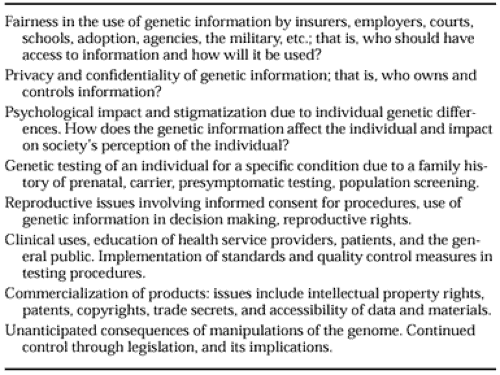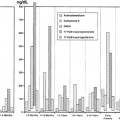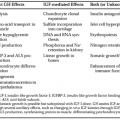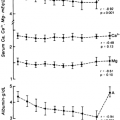FUTURE PROSPECTS
HUMAN GENOME PROJECT
The Human Genome Project was begun in 1990 by the U.S. government and is coordinated by the U.S. Department of Energy and the National Institutes of Health. Although it was originally conceived as a 15-year program, rapid technological advances as well as collaboration between genome projects of several countries (United Kingdom, Germany, Japan, France) and privately funded endeavors to sequence the human genome have accelerated the project to an expected completion date of 2001, with 90% of the genome available in the spring of 2000.34 The Human Genome Project initiated by the U.S. government has set out to sequence the entire genome of one human individual (identity strictly secret), whereas the privately initiated effort is sequencing the entire genome of five different individuals. The latter approach is addressing the issue of some, although limited, variability in the genome of humans.
The goals of the Human Genome Project are to identify the estimated 80,000 expressed genes in human DNA; to determine the sequences of the ˜3 billion chemical bases that make up the human DNA; to store the information in databases that will be made accessible to the public; to develop tools for data analysis; and to address the ethical, legal, and societal issues that may arise from the project. Furthermore, to allow comparison of genetic information among species and to address questions related to the interaction of humans with infectious pathogens, researchers are studying the genetic makeup of several nonhuman organisms, including Drosophila melanogaster, Plasmodium falciparum, and the laboratory mouse. The genomes of several organisms such as E. coli, Saccharomyces cerevisiae, Caenorhabditis elegans, Bacillus subtilis, Synechtosis species, A. fulgidus, P. aerophilum, Haemophilus influenzae, M. thermoautrophicum, M. jannaschii, A. aolicolus, Borrelia burgdorferi, Treponema pallidum, Mycoplasma pneumoniae, M. genitalum, Chlamydia trachomatis, Rickettsia prowazekii, Helicobacter pylori, and Mycobacterium tuberculosis are already known and accessible.
During progress of the Human Genome Project, several new goals have been formulated. For example, one goal is to identify regions of the human genome that differ from person to person. Although the majority of individuals’ DNA sequences are the same, estimates are that humans are only ˜99% identical genetically. These DNA sequence variations can have a major impact on how people’s bodies respond to disease (i.e., to environmental insults, such as bacteria, viruses, and toxins; and to drugs and other therapies). Methods have been developed to rapidly detect different types of variation, particularly the most common type, called single-nucleotide polymorphisms (SNPs), which occur approximately once every 100 to 300 bases. SNP maps will ultimately help identify multiple genes associated with complex diseases such as cancer, diabetes, vascular disease, and some forms of mental illness. These associations are difficult to establish with conventional gene-hunting methods. because a single altered gene may make only a small contribution to disease risk.
The atlas of the human genome will revolutionize medical practice and biologic research into the twenty-first century and beyond. All human genes will be found, and accurate diagnostics will be developed for most inherited diseases. In addition, animal models for human disease research will be more easily developed, facilitating the understanding of gene function in health and disease.
Single genes associated with a number of diseases (e.g., cystic fibrosis, Duchenne muscular dystrophy, myotonic dystrophy, neurofibromatosis, diabetes mellitus, and retinoblastoma) have already been identified. Diseases caused by several genes or by a gene interacting with environmental factors can be studied more efficiently. Genetic susceptibilities have been implicated in many major disabling and fatal diseases, including heart disease, stroke, diabetes, and several kinds of cancer. The identification of these genes and their proteins will pave the way to more effective therapies and preventive measures.
The potential benefits of the Human Genome Project are manifold. Only some of the important potential applications
are discussed here. Molecular medicine (a term lending more significance to medicine and the understanding of human disease and its potential cure at the molecular level) will gain increasing importance in medical practice. Improved diagnosis and earlier detection of genetic predisposition to disease are already commonplace for certain conditions (cystic fibrosis, trisomy, fragile X syndrome, myotonic dystrophy, and neurofibromatosis). The design of drugs that are tailored to the demands imposed by genetic predisposition and the choice of treatment based on genetic information will allow a more rational approach to treatment.
are discussed here. Molecular medicine (a term lending more significance to medicine and the understanding of human disease and its potential cure at the molecular level) will gain increasing importance in medical practice. Improved diagnosis and earlier detection of genetic predisposition to disease are already commonplace for certain conditions (cystic fibrosis, trisomy, fragile X syndrome, myotonic dystrophy, and neurofibromatosis). The design of drugs that are tailored to the demands imposed by genetic predisposition and the choice of treatment based on genetic information will allow a more rational approach to treatment.
Microbial genomics, which yields the sequence and function of microbial genes, can potentially identify new energy sources (biofuels) and identify bacteria useful in environmental remediation, toxic waste reduction, and industrial processing. New tools for risk assessment for exposure to radiation and toxic agents can be made more reliably at the genetic level with information on the human genome. Furthermore, comparison of genomic sequences can increase the capabilities to study evolution through germline mutations in lineages; examine migration of different population groups based on female genetic inheritance; investigate mutations on the Y chromosome to trace lineage and migration of males; and compare breakpoints in the evolution of mutations with ages of populations and historical events.
DNA forensic analysis aimed at proper identification of individuals involved in crimes and catastrophic events, establishment of paternity and family relationships, and matching of organ donors is already commonplace with the limited possibilities available today. The expansion of genetic information with the Human Genome Project should allow for improving the reliability of such tests.
Agriculture, livestock breeding, and bioprocessing are additional areas affected directly by the genome project. Understanding plant and animal genomes can potentially allow the creation of stronger, more resistant plants and animals. Bioengineered seeds are already being used to grow disease-resistant crops, thereby reducing costs in agriculture. Some additional applications that are already being tested experimentally are the design of pesticides, development of edible vaccines incorporated into food products, development of new environmental cleanup uses for plants like tobacco, and generation of animals and plants producing molecules to be used for the treatment of human conditions (i.e., clotting factors, hemoglobin). Although human genome research itself does not pose any new ethical dilemma, the use of data arising from these studies presents challenges that need to be addressed before the data accumulate significantly. Some of the issues pertinent to the question are summarized in Table 2-4. To assist in policy development, the ethics component of the Human Genome Project is funding conferences and research projects to identify and consider relevant societal issues, as well as activities to promote public awareness of these topics.
STEM CELLS
EMBRYONIC STEM CELLS
ES cells are pluripotent cells that give rise to all adult cell types.35 They can be derived from the blastocyst, a preimplantation-stage embryo,36 or from primordial germ cells, cells of the early embryo that eventually differentiate into sperm and oocytes.37 Mouse ES cells have been used for approximately a decade to generate genetically altered mice (knock-out, knock-in, Cre recombinants). Mouse ES cells are pluripotent in that they can differentiate into many cell types. ES cells, unlike fertilized eggs, cannot develop completely into individual organisms. ES cells that are placed into a uterus will never develop into an embryo. After desired manipulations, ES cells are injected into the cavity of a developing blastocyst, which ultimately develops into a chimera harboring all tissue cells from the original embryo as well as filiae of the artificially introduced ES cells. ES cells cannot develop into an embryo on their own; they must be placed into an artificial environment, one in which the host cells provide the placental tissues of the conceptus. The derivation of human ES cells from developing fetuses has opened exciting new possibilities for therapy as well as raising legal and ethical issues.36,38
To be able to generate tissue for potential transplantation or organ replacement, ES cells that are immunologically identical to the prospective host would need to be generated. This could possibly be achieved by somatic nuclear transfer, with a nucleus of a prospective host inserted into a recipient enucleated oocyte of either the same or a different species. From the embryo that developed, the inner cell mass of the blastocyst would need to be isolated and grown in vitro to yield ES cells, which then would need to be differentiated into the desired tissue. To date, not all of these steps have been mastered.
The use of ES cells therapeutically has dangers, however. Mouse ES cells are tumorigenic, growing into teratomas or teratocarcinomas when injected anywhere in the adult mouse. Human ES cells might behave similarly.
PLURIPOTENT STEM CELLS IN ADULT ORGANS
Renewable tissues (blood, intestinal epithelium, epidermis) are considered to harbor stem cells that can, by multiplication, yield cells which can then further differentiate into cells of the respective host tissue.
Cells in the nervous system have been found to have the capacity to generate new neurons and glial cells (astrocytes and oligodendrocytes), and, because of this, they are considered to be neuronal stem cells.39,40,41 These cells can be isolated from the wall of the lateral ventricle of the brain.42 These cells, which constitute ˜0.1% to 1% of the cells in the ependymal lining, express immature neural markers consistent with a stem-cell function.
Stay updated, free articles. Join our Telegram channel

Full access? Get Clinical Tree







